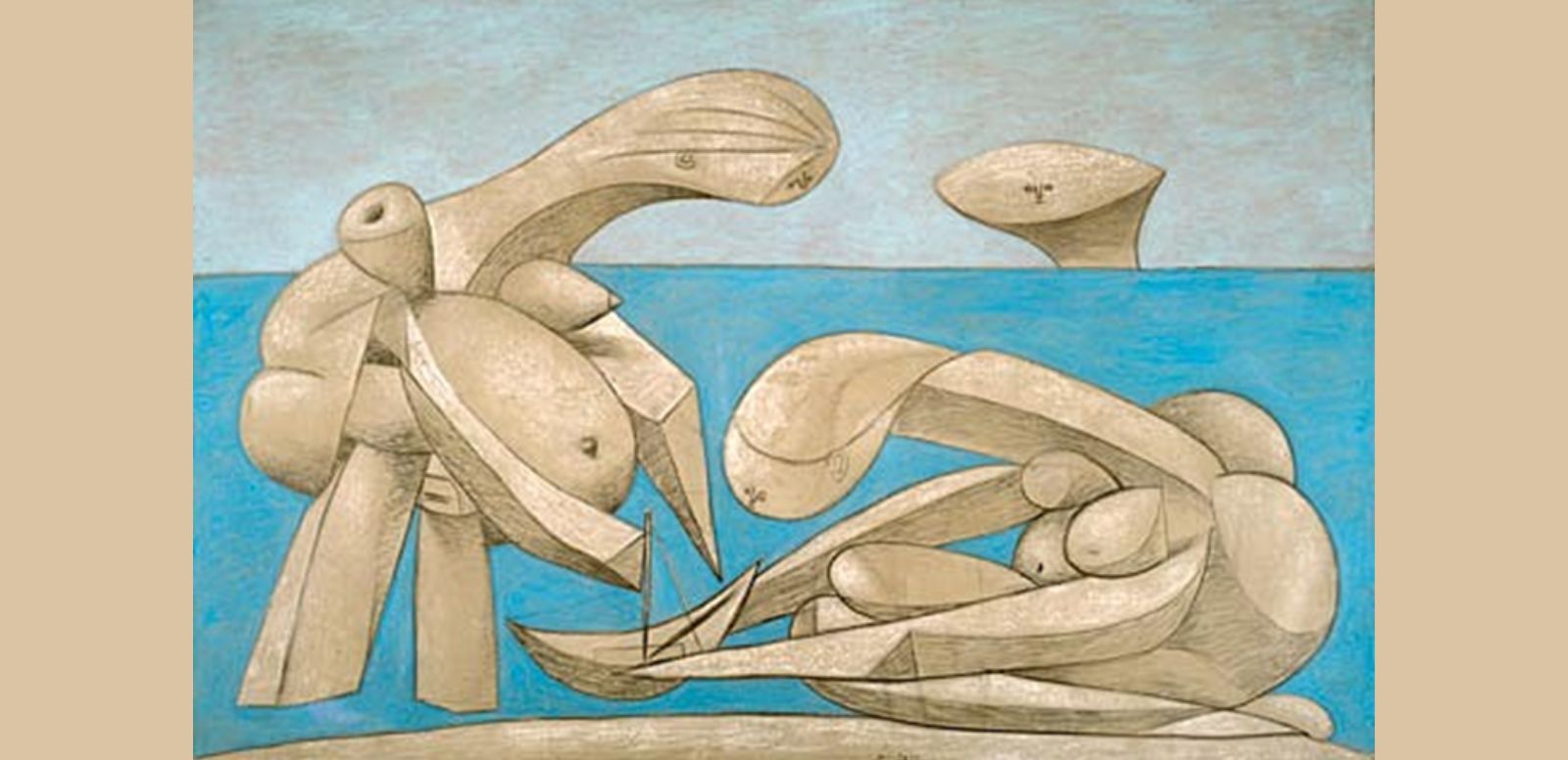
Solomon R. Guggenheim Museum, Nueva York
© Sucesión Picasso, VEGAP, Madrid, 2024
Picasso's Women Running on the Beach was created during the first months of 1937, in a context marked by the Spanish Civil War. In this period the artist responded to political events with works such as Guernica (1937) or The Dream and the Lie of Franco (1937), but also created pieces outside these concerns, which addressed a timeless or even evasive theme, such as this scene on the beach.
Painted in Le Tremblay-sur-Mauldre, near Versailles (France), this painting, also known as Women with a Toy Boat, takes up motifs and forms present in earlier works by the artist, such as Three Bathers from 1920. In the work, there is a return to the hardened volumetric forms that characterized Picasso's work in the late 1920s and early 1930s. Picasso adopts a simplified style that approximates the approaches of French painter Henri Matisse, especially in works such as Le Luxe, II (1907-08).
The work features several female figures in motion, playing with a toy boat. The women's bodies, which appear to be sculpted in plaster, suggest a dazzling whiteness and a sense of freshness, reminiscent of portraits of Marie-Thérèse Walter, Picasso's partner at the time.
The composition of the figures reveals an interest in the materialization of the figure, with angular forms that cut through the rounded volumes sharply. The small heads and elongated necks, along with the sharp, polyhedral arms, add to the women's sense of instability, despite the apparent solidity of the material.
Sources:
Solomon R. Guggenheim Museum, New York: https://www.guggenheim.org/artwork/3449

